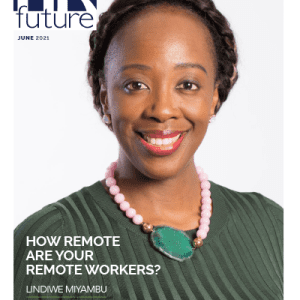Improving your employee onboarding and training is one of the most valuable HR investments you can make.
It has become common knowledge that Millennials and the upcoming Gen Z are staying in one job for shorter periods of time than did their predecessors, and there’s increasing concern about the skills gap in South Africa. Employers without effective training methods are finding it a challenge to efficiently and effectively bring replacements in and expand to meet demand. In many cases, the best route to a qualified workforce is to hire for personality and culture fit, and train to upgrade or specialise skills as necessary.
To get started, have existing staff make a note of tasks they regularly deal with. Depending on the personalities and competencies among your existing staff, they may be able to help you create training materials, or you may want to bring in a dedicated HR team member or an outside consultant for this step.
One approach gaining traction among South African companies is a mentorship or apprenticeship model, where new employees or team members transitioning within the company are paired with a more experienced individual. That approach works well for highly relational personality types, and for jobs where the tasks require more judgment and experience and less checklist-based consistency.
A good checklist, while by no means a new method, can still be highly effective for many jobs that require steps to be undertaken in the same order or to be completed without a gap. Take this to the next level with built-in links to training materials such as videos, digital forms, or mobile apps. Digitisation is growing across the board and fits neatly with the rise of on-demand and remote or mobile training. Checklists can be a great tool for managers as well, helping them monitor new hires and to assess progress and accuracy.
Many employees respond well to a mixture of approaches including a high degree of visual content and often struggle with text-heavy manuals. Custom video training is one of the fastest growing methods and has multiple benefits. It’s possible to show a detailed, multi-step task by video in a clearer and more engaging or entertaining manner. Video also conveys a sense of workplace culture, which helps new employees understand and fit into the workplace faster and more intuitively.
While specialist consultants can help you create effective video for better training outcomes, there are also excellent movie maker tools for you to create your tutorials and informational video. These can also be used for hiring, promotion, and general marketing purposes.
Increased focus on motivation and personalisation in training schemes is another growing trend. Gamification elements included in tutorials and training encourage and incentivize investment and focus and may include an element of competition or reward. Personalisation focuses on finding the right fit between the learner and the material to be covered and is sensitive to diverse learning styles. It can be a challenge for smaller organisations to provide, but results in measurably improved learner outcomes.
Companies in South Africa can prepare for the future and get ahead of the skills gap by investing in learning programmes. Consider both the nature of tasks or job requirements, and employee preferences and flexibility when it comes to creating tutorials or training schemes and stay flexible and up-to-date with digitised materials by including a mix of checklists, graphic, and video materials with human-centric one-on-one learning experiences.
Karl Burrows is Business and Management Graduate and freelance writer.









